Overclocking Basics
In this detailed guide, I will teach you how to overclock your graphics card safely. Also, if you don’t have any experience in overclocking a GPU this guide will help you achieve a stable overclock without worrying about anything.
It doesn’t matter if you have an Nvidia GTX 1080 or an RTX 2080 or an AMD RX 590 or a Radeon 5700XT you may want to explore and push the graphics card to see its upper limit.
Also, note that most modern Graphics cards come with Auto OC and they increase the performance and clock speed automatically without a need to push them. However, this guide is for manual overclocking, and if you want to push beyond what the manufacturer has done in terms of the OC settings on your graphics card.
The basics for overclocking remain the same irrespective of the age of your card. Can you get those additional 10 FPS in your most loved GTA 5 or Assassin Creed Rogue or Unity?
If you are a beginner to overclocking you will love this guide and if you already have hands-on experience You can read the Advanced Overclocking tips and Check out the Gaming Benchmarks.
Need For Overclocking
Firstly, Why do you want to overclock? If you are struggling with the latest gaming titles or you want to see the max potential of your graphics card? You can start overclocking effortlessly following the instructions shared below.
In my case, I overclock as I want to see the potential for the card rather than having any real need.
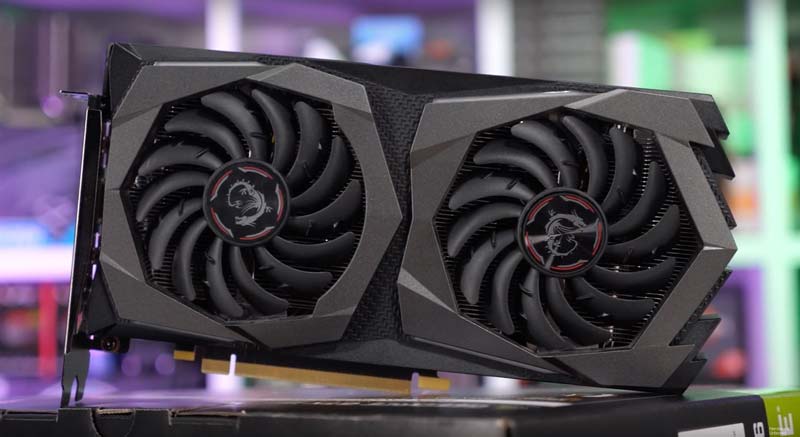
Pros of Overclocking:
- Get additional FPS in gaming titles.
- Can enjoy higher graphical settings.
- Can be able to Run games which you are struggling to play otherwise.
- Get maximum value out of graphics card which you have paid for. (5% to 15% increase in performance.)
Cons of Overclocking:
- Overheating of the gaming PC and the Room.
- Risk of damaging your graphics card.
- Reducing the Life Span of a graphics card.
- Increased noise levels and heat.
Is it Safe to Overclock – Yes as far as you don’t go crazy and push the limits of your Graphics Card.
In this article, I will overclock one older AMD Radeon HD 7950 to get the maximum out of it and also overclock the new Nvidia GTX 1060 6 GB version to see the performance improvements.
There are many Softwares available that you can use to overclock the graphics card. I like to use the MSI afterburner for the Nvidia Graphics cards and I also have a Sapphire AMD Radeon card that I overclock using the Saphire Trixx software. You can also use the MSI afterburner to overclock the AMD Radeon Graphics cards.
This Guide was originally written by me in 2015 and later in June 2020, I have made updates and changes.
It doesn’t actually matter, you can use the MSI burner for both AMD as well as Nvidia Graphics card overclocking.
Test Setup Gaming PC Configuration
- Processor – Intel Core i5 3570k.
- Motherboard – Z77 Asrock Extreme 6.
- Graphics Card – Sapphire AMD HD 7950 OC edition.
- Operating System – Windows 8.1
- Base clock 850 Mhz.
- Boost Clock 925 Mhz.
- RAM – Corsair Vengeance 8 GB.
- Cabinet – HAF 912.
- Monitor – Dell S2240 L
- Hard Drive – Seagate Barracuda 7200 RPM.
-
Test Setup Gaming PC Configuration 2
- Processor – Intel Core i7 6700k.
- Motherboard – Gigabyte Gaming 7 – Z190.
- Graphics Card – Nvidia GTX 1060.
- Base clock 850 Mhz.
- Boost Clock 925 Mhz.
- Operating System – Windows 10
- RAM – G.Skill 3200 MHz DDR4 Ram.
- Cabinet – HAF 912.
- Monitor – Dell S440 L
- SSD – Samsung 860 Evo.
Software Required
- Furmark
- PC Mark
- Sapphire Trixx or MSI afterburner
- Unigine’s Heaven benchmark
- GPU-Z, HW Monitor (Optional)
How to Overclock AMD or Nvidia Graphics Card
Okay, before proceeding to overclock you graphics card it is a good idea to do couple of things:
- Update your graphics card driver to the latest as it can offer you a boost in performance.
- Update the Windows to run on the latest version.
- Take out your graphics card from the case and clean it if you have not done it in the last 1 year.
So once you have done the above, download the MSI afterburner and GPU-Z and other Softwares that I have mentioned above.
GPU- Z Software
You can check out all the details for your graphics Card in GPU-Z like Technology and Die Size, Shaders, Bus width, GPU Core Clock, Memory Clock, and Temperatures. You can create a Log of test you do while overclocking and review it later.
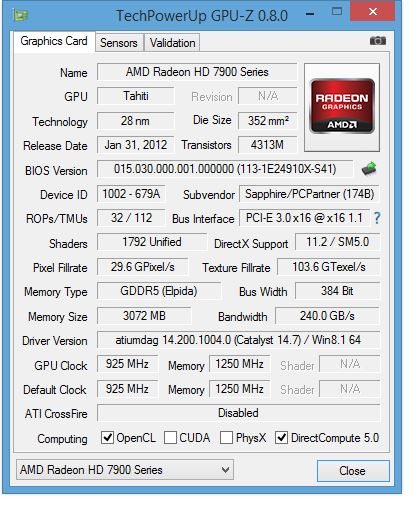
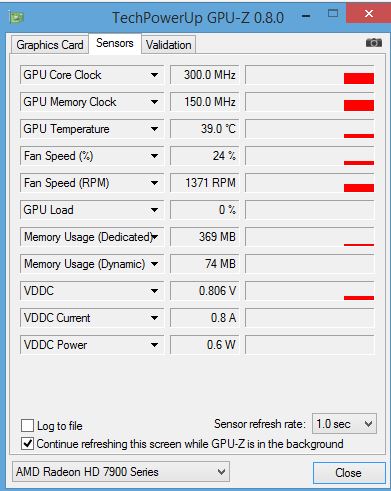
MSI AfterBurner
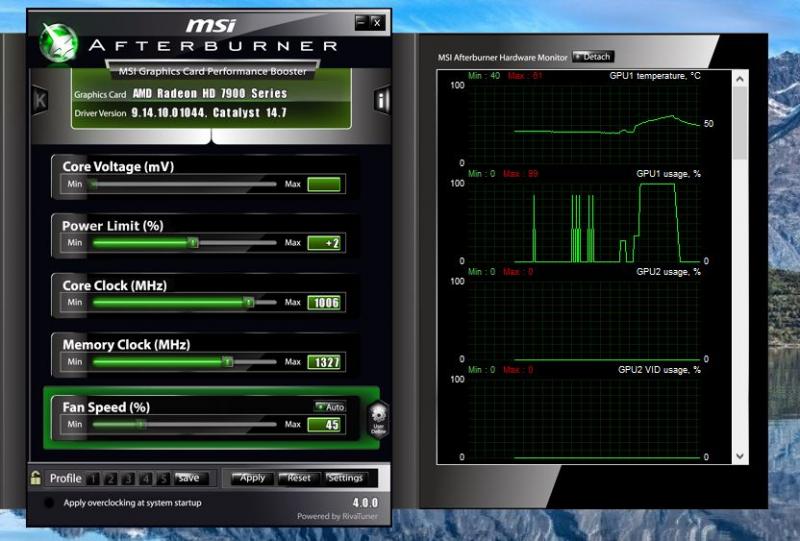
MSI Afterburner offers a host of features and has a good display and you can measure Temperature and GPU usage in real-time.
Sapphire Trixx – Simplistic Tool For Overclocking
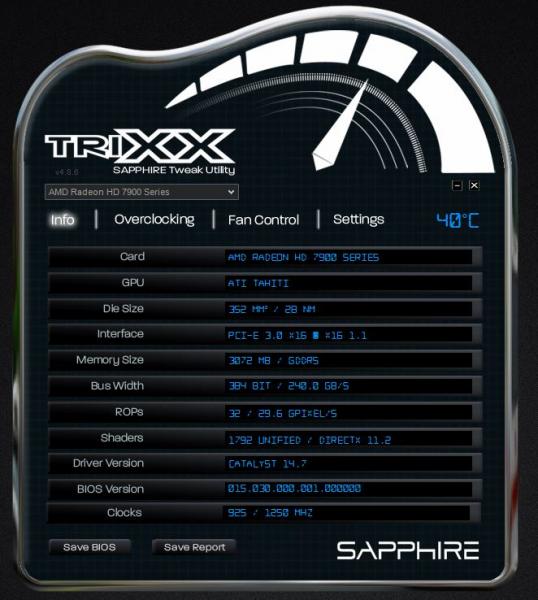
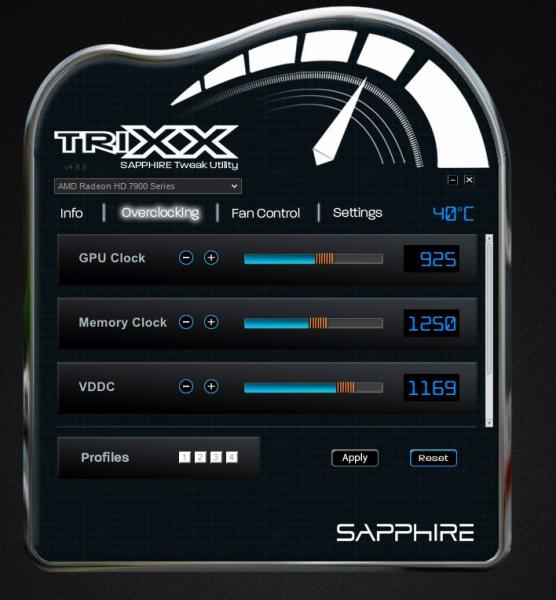
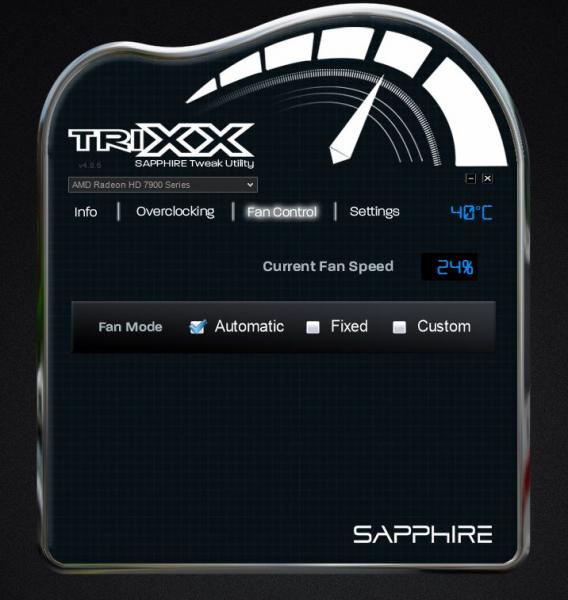
Simple and very easy to use, gives information about the Graphics card. In the second Image you can check the variables you need to tweak for Overclocking :
Overclocking Variables
- GPU Clock or Core Clock.
- Memory Clock
- VDDC – Voltage
- Board Power LI or Power Draw – ( not visible in Picture).
How to Overclock AMD or Nvidia Graphics Card – A Beginners Guide, How to Do Overclocking Step By Step
Method Used – After you have downloaded all the software lets start overclocking the Graphics card. We will do it here with Sapphire trixx while you can use any other software like AMD OverDrive, ASUS GPU Tweak, EVGA Precision X, or even the MSI Afterburner. We will first learn how to overclock the GPU Memory clock and GPU Core clock separately.
And then we will understand overclocking both GPU and Memory Clock together at stock voltage and Power.
This is a safe procedure and will not damage your graphics card in all likely hood but overclocking comes with a statuary warning that you are doing it at your own risk. I have overclocked many times no hardware failures so far, some system freeze and restarts mostly.
Note – Always monitor the temperature of the Graphics Card and it is advised to quit the Benchmark test if Temperature goes beyond 80 degrees C. I usually like to keep it below 75 degrees C.
Some of the older graphics cards run hot and I will not suggest you to OC in case you are seeing temperatures over 80 degrees celsius with the stock clock speeds.
We Will first Overclock the Memory Setting than the Core Clock.
Increase the Power Draw or Board Power Li to 15% and start the test.
How to Overclock the Memory Clock Step by Step
- Open Sapphire Trixx.
- Move the slider for the memory to up by 50 MHz using the mouse.
- Apply the setting.
- Open FurMark and run the benchmark preset that you prefer. Here I Run the 1080p preset, you can run the 720p preset as well depending on your monitor resolution.
- If your system passes, increase the frequency by 50MHz on the slider again.
- Apply and run FurMark again.
- Repeat until your system fails the benchmark test or crashes or the system freezes.
- Drop back 25 MHz from the last used setting using the slider.
- Run the benchmark again to check if the system is working fine and you are not experiencing any artifacts or freezing in the benchmark.
- If passed successfully stop there and record the frequency that your system passed the benchmark test successfully.
- Reset Sapphire trixx back to default memory setting.
If you observe when running the Furmark your temperatures are increasing over 80 degrees Celsius than you can increase the fan speed using the custom settings. You can keep the fan speed to around 50 to 60% depending on how much fan noise is acceptable for you.
Also, you can Google and search on hardware forums what is the best OC settings for most people using the same graphics card as you have and can take that as a reference point.
Even if your system freezes or Trixx is set back to default settings don’t worry you are not going to damage the system.
How to Overclock the Core Clock Step by Step
- Open Sapphire Trixx Software.
- Increase the clock speed by moving the slider to the right or increasing the clock speed manually with an interval of 20 Mhz.
- Apply the setting.
- Open FurMark and run the benchmark preset that you have chosen previously.
- Also, you may want to tweak the fan profile to increase the cooling.
- If you Gaming PC passes the benchmark increase clocks by another 20 points.
- Apply and run FurMark again.
- Repeat until your system fails the benchmark test or crashes or the system freezes.
- Drop back 10MHz from the last used setting using the slider.
- Run the benchmark again to check the stability and if stable note down the highest clock frequency your graphics card can run at with Stock voltage and power setting.
- Run Unigine’s Heaven benchmark and see if you are not experiencing artifacts or freezing. If it runs perfectly you are good to go.
Overclocking Both GPU Core Clock and Memory Clock Simultaneously
With the above testing, we find the highest your graphics card can go with the default voltage and Power Draw Settings. Next, we will find the highest Core Clock frequency and Memory Clock Frequency for the Graphics Card.
Now we will do an overclocking for both simultaneously. Notably, we may achieve a lower number for both settings when doing simultaneous overclock.
Most of the time it is not possible to get the max core frequency and the max memory frequency that we achieved separately to be stable at the same time, but we will try and get as close as possible.
- Open Sapphire Trixx.
- Move the slider for the GPU Core clock to 50 Mhz below what you achieved earlier.
- Move the slider for the GPU memory clock to 100 Mhz below what you achieved earlier.
- Apply the setting.
- Open FurMark and run the benchmark preset that you prefer. Here I Run the 1080p preset, you can run the 720p preset as well depending on your monitor resolution.
- If your system passes, increase core clock frequency by 30 Mhz and Memory Frequency by 50 Mhz.
- Apply and run FurMark again.
- Repeat until your system fails the benchmark test or crashes or the system freezes.
- Drop back core frequency by 30 and memory clock frequency by 50 Mhz.
- Run the benchmark again to check if the system is working fine and you are not experiencing any artifacts or freezing in the benchmark.
- Run Unigine’s Heaven benchmark and see if you are not experiencing artifacts or freezing. If it runs perfectly you are good to go.
- This is your stable overclock for the Graphics card at stock voltage and Power Draw.
This was the Basics for Overclocking next let’s explore the Advanced Overclocking.
Also, If you have not done the Graphics Driver Update – Please do that First. I got a massive increase of over 20% with GPU Driver update (read here).
Advanced Overclocking
Now you may have gained some experience of what overclocking is and how you can do it. The next step is to move into real overclocking. Here we will increase the PowerDraw as well as the Core voltage settings for the Card.
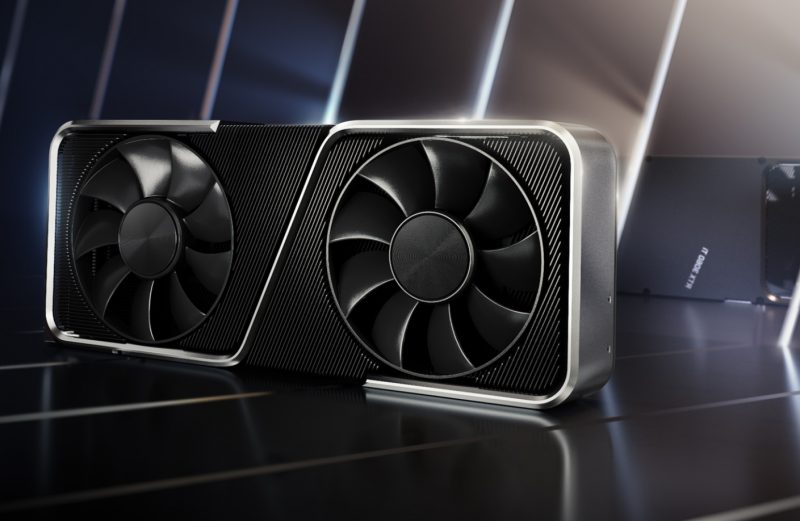
It is better to test the graphics card with basic overclocking for sometime before you attempt to play with the power and voltage settings to increase gaming performance. Additionally, video card manufacturers have been implementing safety measures to prevent users from easily damaging their video cards.
Some of the latest Nvidia graphics cards have a fixed upper limit for voltage and clock speed so you may not be able to push these beyond a certain point.
Also, the Safety nets, such as the use of dynamic clock speeds and GPU throttling, have made overclocking safer and more accessible to the average user.
Understanding Voltage or VDCC & Board Power Settings
The power setting increases the TDP limit, so the card won’t thermally throttle down when it reaches its power consumption limit.
Watts = Voltage x Amperage.
Where Watts is total power, the voltage is the potential difference (electrical tension), or the potential to be able to draw current and amperage is the measure of the actual current so increasing voltage increases the potential amount of power a GPU can draw.
In this Section, we will increase the Power Limit Using the Sapphire Trixx Software. For MSI afterburner, you may have to unlock the voltage multiplier in the settings to bump up the voltage.
Note for Most modern Graphics cards like the Nvidia GTX 1660, 1650, or the RTX 2060, 2070, 2080, or AMD 5500, 5600, or the 5600 XT there is no need to change the voltage settings just increase the power draw and you will be good.
There is no point messing with the voltage settings for a little bump in performance.
Step By Step Guide for Extreme Overclocking within limits
- Open Sapphire Trixx.
- Move the slider for the GPU Core clock to the maximum you achieved.
- Move the slider for the GPU memory clock to the maximum you achieved.
- Increase the Board Power Li or Power Draw in case of Afterburner to 20.
- Apply the setting.
- Open FurMark and run the benchmark preset that you prefer. I run it on the 1080p preset, you can run the 720p preset, depending on your monitor resolution.
- If your system passes, increase core clock frequency by 30 Mhz and Memory Frequency by 50 Mhz.
- Apply and run FurMark again.
- Repeat until your system fails the benchmark test or crashes or the system freezes.
- Run the benchmark again to check if the system is working fine and you are not experiencing any artifacts or freezing in the benchmark.
- Run Unigine’s Heaven benchmark and see if you are not experiencing artifacts or freezing. If it runs perfectly you are good to go.
- This is your stable overclock for the Graphics card.
- Wish to go beyond this can increase the VDDC (increasing voltage is not recommended for beginners – Only do it if you know what you are doing) by a very small interval of 5 and increase the core clock and memory clock.
- Look at your graphics card in forums to see what people have achieved safely and try to stay within the limits of overclocking.
- The goal is to get maximum advantage from your card not to burn and go buy a new one.
- Practice Safe overclocking, the advantage of getting 4-5 FPS extra beyond the safe Limits does not outweigh the risk of damaging and reducing the Life Span of your graphics card.
Overclocking – Results – 10% to 30% Increase in Gaming Performance
These results are for my old AMD Radeon HD 7950 graphics card, some of these AMD graphics cards were absolute monsters when it came to OC. Modern cards are already overclocked by the manufactures and are mostly running at peak level, however, you may still be able to get more than 5-8% gain in performance.
Gaming Benchmarks Overclocking Vs Stock Graphics Card
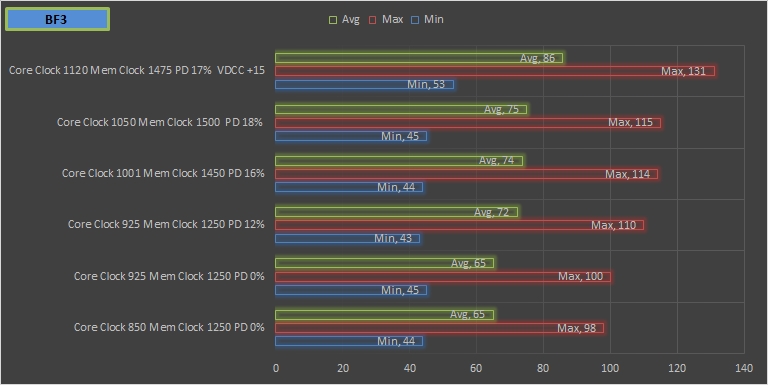
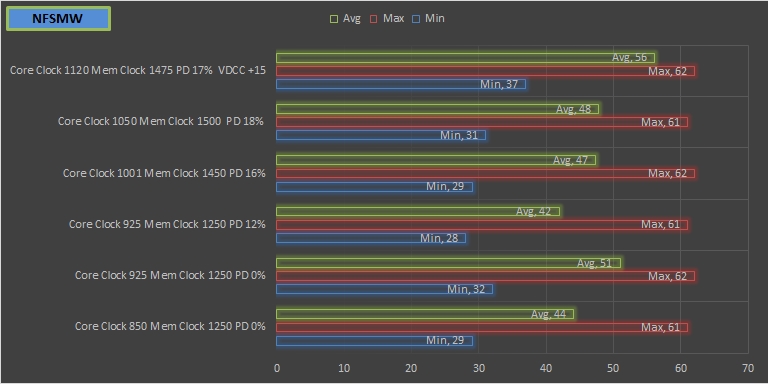
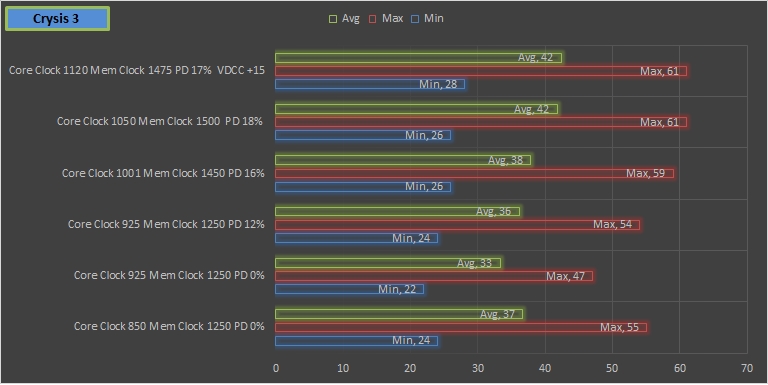
The Gaming Performance Stock Vs Overclocked Graphics Card:
The Gain in FPS compared to Stock GPU Core Clock of 850 & Memory Clock of 1250 Vs GPU Core Clock 1120 Mem Clock 1475 Power Draw of 17% & VDCC +15. We got an increase of 34% in BF3 Avg FPS, 27% in the Need for Speed Most wanted 12 Avg. FPS, 16% increase in Crysis 3.
| Gaming performance Gain – BF3 – 1080p 4x ultra | ||
| Min | Max | Avg |
| 20% | 34% | 32% |
| Gaming performance Gain – NFSMW 1080p all ultra | ||
| Min | Max | Avg |
| 28% | 2% | 27% |
| Gaming performance Gain – Crysis3 Fxaa and ultra | ||
| Min | Max | Avg |
| 17% | 11% | 16% |
Overclocking Load and No Load – Temperatures
| GPU Core Clock | GPU Temp No Load | GPU Temp Load Gaming |
| Core Clock 850 Mem Clock 1250 PD 0% | 41°C | 66 Max |
| Core Clock 925 Mem Clock 1250 PD 0% | 40°C | 67 Max |
| Core Clock 925 Mem Clock 1250 PD 12% | 42°C | 67 Max |
| Core Clock 1001 Mem Clock 1450 PD 16% | 43°C | 70 Max |
| Core Clock 1050 Mem Clock 1500 PD 18% | 43°C | 71 Max |
| Core Clock 1120 Mem Clock 1475 PD 17% VDCC +15 | 42°C | 73 Max |
We Used AMD HD 7950 a mid-level Graphics Card to do these benchmarks and the test configuration as given in the beginning of the Article.
Furmark Bench Mark Results
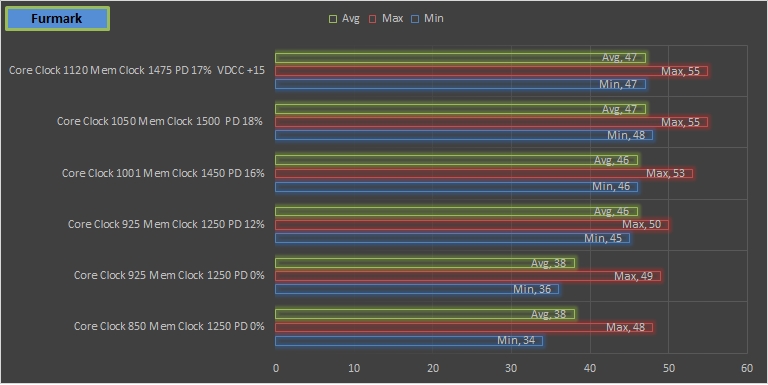
I will try to add some more results of the GTX 1060 that I am testing in the coming days to this guide – If you have any queries let me know in the comments below.
Concluding Thoughts:
How much should you Push Your Graphics Card? Is it worth it? If you ask me you should push it to a moderate level of overclocking. Beyond a limit, the sound of the fan and heat is too much and annoys during the gaming.
Also, most of the modern graphics cards are well-tuned and overclocked from the OEM’s and the gain with OC is little but if you want to try and have some fun, go ahead and play with it.
Try your overclock and do share with us the results or issues you are facing. We have not pushed the graphics card to its very limit(it is not an overclocking competition), and I am not using an aftermarket cooler.
Lastly, If you are still having performance issues with your Graphics card – I wrote these very useful 9 Tips that You Can Use to Boost Graphics Card Performance.


